Introduction to Motorcycle Jack Safety
When it comes to maintaining and caring for your motorcycle, using a motorcycle jack is essential. But like any tool, using it safely is key to preventing accidents and injuries. Safety starts with understanding the equipment you’re working with and the risks involved.
A motorcycle jack is a device designed to lift motorcycles off the ground. This is so you can perform maintenance such as oil changes, tire swaps, or chain adjustments safely and more easily. But without proper use, a motorcycle jack can be a safety hazard.
Here are the crucial points to ensure motorcycle jack safety:
- Know Your Jack: Understand its weight capacity and how it operates.
- Read the Manual: Before using the jack, always read the manufacturer’s instructions.
- Inspect Before Use: Check the jack for any signs of wear or damage.
- Stable Surface: Always use the jack on a flat, stable surface.
- No Shortcuts: Follow the specific steps for lifting and lowering your bike.
- Stay Alert: Never work under the motorcycle unless it’s secured on stands.
- Seek Expert Advice: If unsure, get help from someone experienced in using motorcycle jacks.
By following these points, you enhance your safety and extend the life of both your motorcycle and the jack. We will delve into each of these aspects in more detail in the following sections of this blog. Our goal is to give you the confidence to use your motorcycle jack safely and effectively.
Remember, safety first – your bike depends on it, but more importantly, so do you.
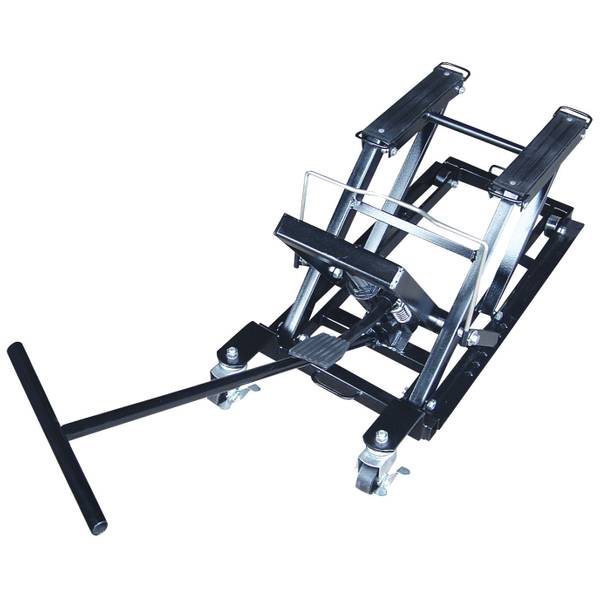
Selecting the Right Jack for Your Bike
Choosing the right motorcycle jack is crucial for both your bike’s safety and your own. It’s not as simple as picking any jack on the market. You need to consider certain factors to ensure you make a wise decision.
First, look at your motorcycle’s weight. Check your motorcycle’s manual for its weight and compare it to the weight capacity of the jacks you’re considering. You need a jack that can handle your bike’s weight with ease.
Next, think about the design of your motorcycle. Some jacks are better suited for certain bike styles. For example, sport bikes might need a different jack type than cruisers. Ensure the jack you pick fits your motorcycle’s design and lifting points.
Also, consider the storage space you have. Motorcycle jacks come in different sizes. A compact jack might be best if you have limited space. For a more heavy-duty use, a larger jack may be necessary.
Look at the jack’s construction too. Strong materials like steel are ideal for durability and reliability. Avoid jacks that seem flimsy or have parts that are prone to breakage.
Finally, think about the user experience. Some jacks come with additional features like wheels or a foot pedal. These can make lifting your motorcycle easier and more convenient. Easy-to-use features can make a big difference, especially if you’ll use the jack often.
Picking the right motorcycle jack takes some thought, but it’s worth the effort. The correct jack will serve you well for years, making every maintenance task safer and easier. Remember, if you’re ever in doubt, consult with someone experienced in using motorcycle jacks.
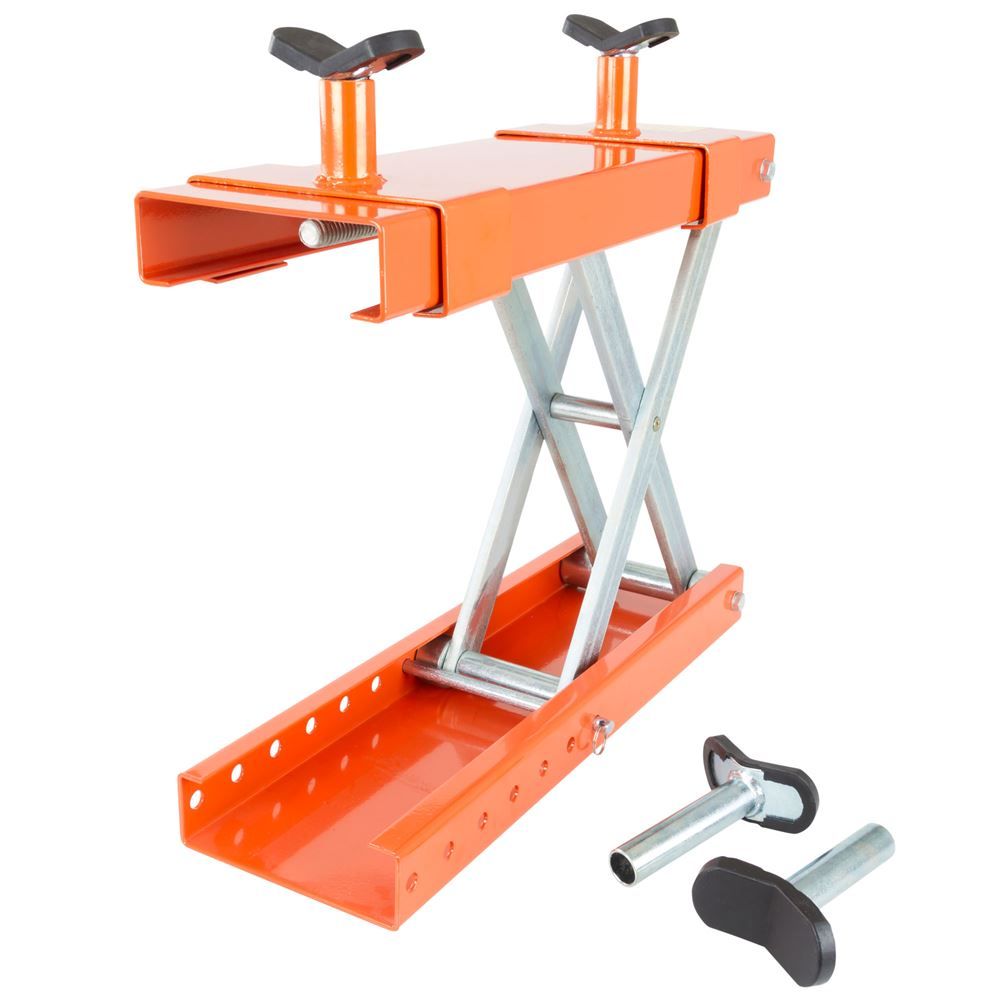
Pre-Lift Safety Checks
Before you lift your motorcycle, completing a pre-lift safety check is crucial. Here are the steps to follow:
- Inspect the Jack: Look at your motorcycle jack for any signs of wear or damage. Use a flashlight if necessary. Do this every time before you use the jack.
- Check the Work Area: Ensure the floor is free of spills, grease, or debris that could cause slippage. The work area should be flat and stable.
- Review the Motorcycle’s Condition: Make sure the bike is in a good state for lifting. Secure any loose parts that could shift or fall off.
- Verify Jack Capacity: Double-check that the jack’s weight limit can handle your bike. The motorcycle’s weight is in its manual.
- Prepare Emergency Items: Have supports like blocks or stands nearby. These can prop the bike if the jack fails. Keep a first aid kit handy too.
Remember, rushing the pre-lift process can lead to mistakes. Take your time and ensure every detail is in order for your safety and that of your motorcycle.
Proper Lifting Techniques
Following proper lifting techniques with a motorcycle jack is not just a recommendation—it’s a must. Here are essential steps to lift your motorcycle safely:
- Position the Bike: Make sure the motorcycle is in neutral. Place it on a firm, level surface.
- Align the Jack: Position the jack under the bike’s designated lift points. These are typically found in the bike’s owner’s manual.
- Raise Slowly: Pump the jack handle with care. Watch the bike as it lifts to catch any instability early.
- Lock the Jack: Once at the desired height, lock the jack in place. Never rely on hydraulic pressure alone to hold the bike.
- Secure the Bike: Attach safety straps or use a bike stand for extra stability. This step is crucial.
- Test Stability: Give the bike a gentle shake to ensure it’s secure before starting any work.
Skipping steps or rushing can lead to accidents. Use steady moves and always stay focused. If the bike seems unstable at any point, lower it back down and start again.
By practicing these techniques, you’ll maintain the motorcycle jack’s integrity and your own safety.
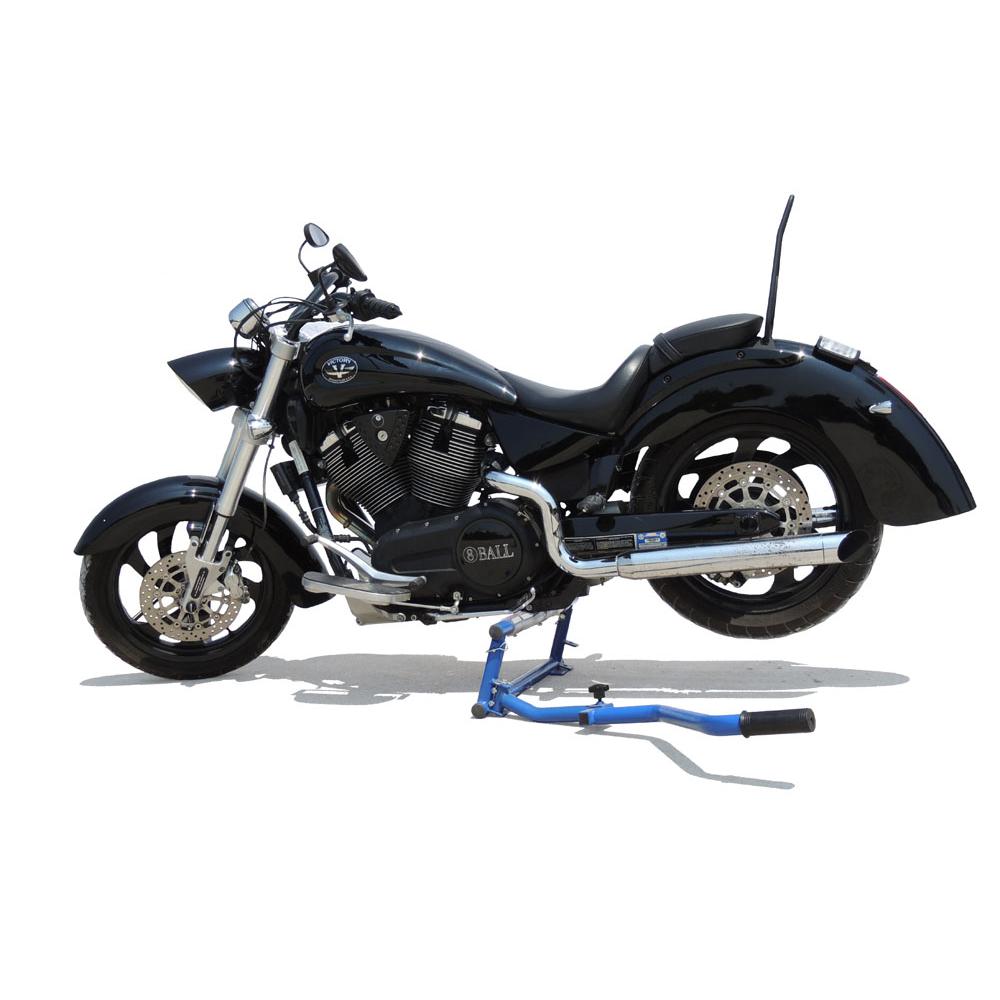
Positioning Your Motorcycle Securely on the Jack
Positioning your motorcycle correctly on the jack is critical for safety. Follow these clear steps:
- Find the Right Spot: Identify your bike’s lifting points from the manual.
- Center the Bike: Ensure the motorcycle is upright and centered on the jack.
- Engage the Locks: Before lifting, lock the wheels if your jack has this feature.
Place the jack so it makes firm contact with the lifting points. Don’t rush this part. A wrongly positioned jack could slip or tip your motorcycle. This could cause harm to you and damage to your bike.
Once your bike is correctly positioned, lift it slowly. Watch the bike closely as it rises. Make sure it stays level. If you see any tilting or hear unusual noises, stop. Lower the bike and reposition the jack.
After lifting, always double-check that the bike is stable. It should not wobble or sway. Use the jack’s built-in safety features, if available. These might include straps or braces that provide extra hold.
Do a final walk-around before you begin any maintenance work. Check all points of contact between the motorcycle and the jack. Confirm that everything looks secure. Only then should you proceed with your work.
Remember to follow these steps every time you lift your motorcycle. They help to avoid accidents and ensure both your safety and the longevity of your bike.
Maintenance of Your Motorcycle Jack
Routine maintenance of your motorcycle jack helps ensure it stays in good working condition. Start by keeping the jack clean. Wipe off any grease, oil or dirt after each use. Check for rust or corrosion regularly. Apply anti-corrosion products if necessary.
Always check for loose parts or components. Tighten them if you find any. Lubricate moving parts like wheels and pivot points. Use the lubricant as the manual recommends.
Store the jack in a dry, covered place. Avoid placing heavy objects on the jack when not in use. This can damage it over time. Keep an eye on the hydraulic fluid level. Add more if the level drops or changes color. Refer to the manual to pick the right fluid type.
Inspect the jack’s safety features. This includes safety locks, straps, and any other mechanisms. Replace worn-out parts as needed. It’s best to use parts from the original manufacturer.
Document each maintenance session. Note the date, the condition of the jack, and any actions you took. This way, you can track the jack’s maintenance history.
Following these steps can extend the life of your motorcycle jack. It also helps prevent accidents due to equipment failure. Safe practices are not just for lifting your bike but also for maintaining the tools that help you do it.
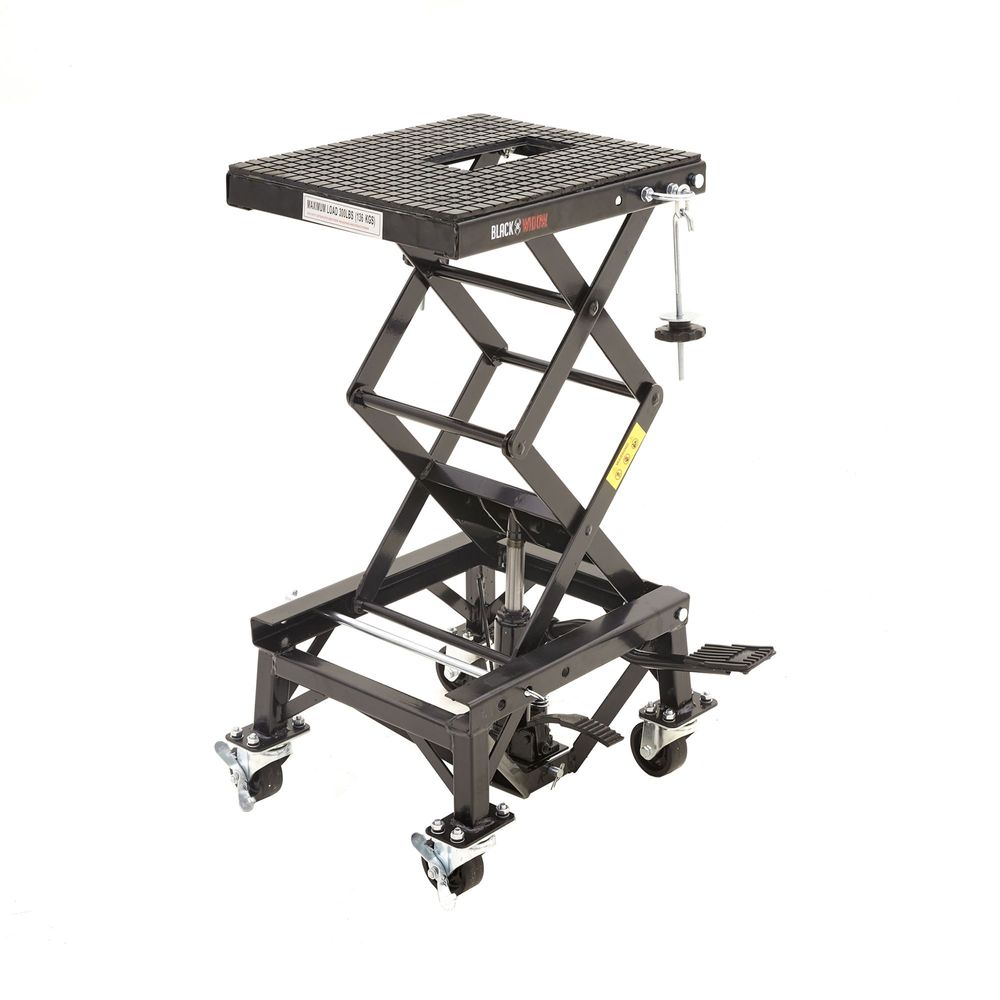
Safety Gear and Emergency Preparedness
When using a motorcycle jack, wear the right safety gear. This could include gloves and sturdy shoes. Protect your hands and feet in case something drops. Also, wear tight-fitting clothes. Loose clothing can get caught in moving parts.
Keep an emergency kit close by. It should have a first aid kit, a flashlight, and extra batteries. Be ready for any incident. Also, have a phone within reach. If an injury happens, you can call for help fast.
Use wheel chocks to keep the motorcycle from rolling. This is vital when lifting the bike. Wheel chocks add another layer of safety. They lock the wheels in place.
Know where the bike stands or blocks are. You might need them quickly if there is an issue with the jack. Make sure stands are in good shape. Broken or unstable stands can cause accidents.
Always work with a partner if you can. They can help you lift the bike and be there in case of emergency. Two sets of eyes and hands are better than one.
Remember, safety gear and being ready for emergencies are key. They could prevent injuries and make lifting your motorcycle safer.
Dos and Don’ts When Using a Motorcycle Jack
To guarantee safety and efficiency when lifting your motorcycle, comply with these dos and don’ts:
- Do: Always work on a hard, flat surface. This reduces the risk of the jack tipping over.
- Do Not: Lift your bike on uneven or soft ground; it’s unsafe and can cause instability.
- Do: Make sure the motorcycle is in neutral. This prevents it from rolling unexpectedly.
- Do Not: Attempt to lift the motorcycle if it is in gear, as it may move and slip off the jack.
- Do: Use the jack points specified in your motorcycle’s manual for safe lifting.
- Do Not: Improvise with jack placement; you may cause damage or a dangerous fall.
- Do: Raise the motorcycle slowly, monitoring stability throughout the process.
- Do Not: Rush the lifting process. Hasty actions increase the risk of accidents.
- Do: Apply wheel chocks if the bike might move during lifting or maintenance.
- Do Not: Skip using wheel chocks as they are crucial for preventing unwanted movement.
- Do: Have someone there to help you. An extra pair of hands makes lifting safer.
- Do Not: Lift heavy motorcycles alone. You might need quick assistance, an extra person is safety.
- Do: Wear protective gear such as gloves and solid footwear while working.
- Do Not: Ignore personal safety by skipping on protective clothing, risking injury.
- Do: Properly maintain your motorcycle jack. Check and care for it regularly.
- Do Not: Neglect maintenance. A faulty jack can lead to safety hazards and potential injuries.
By adhering to these essential practices, you significantly reduce the risks associated with using a motorcycle jack and promote a safer maintenance environment.
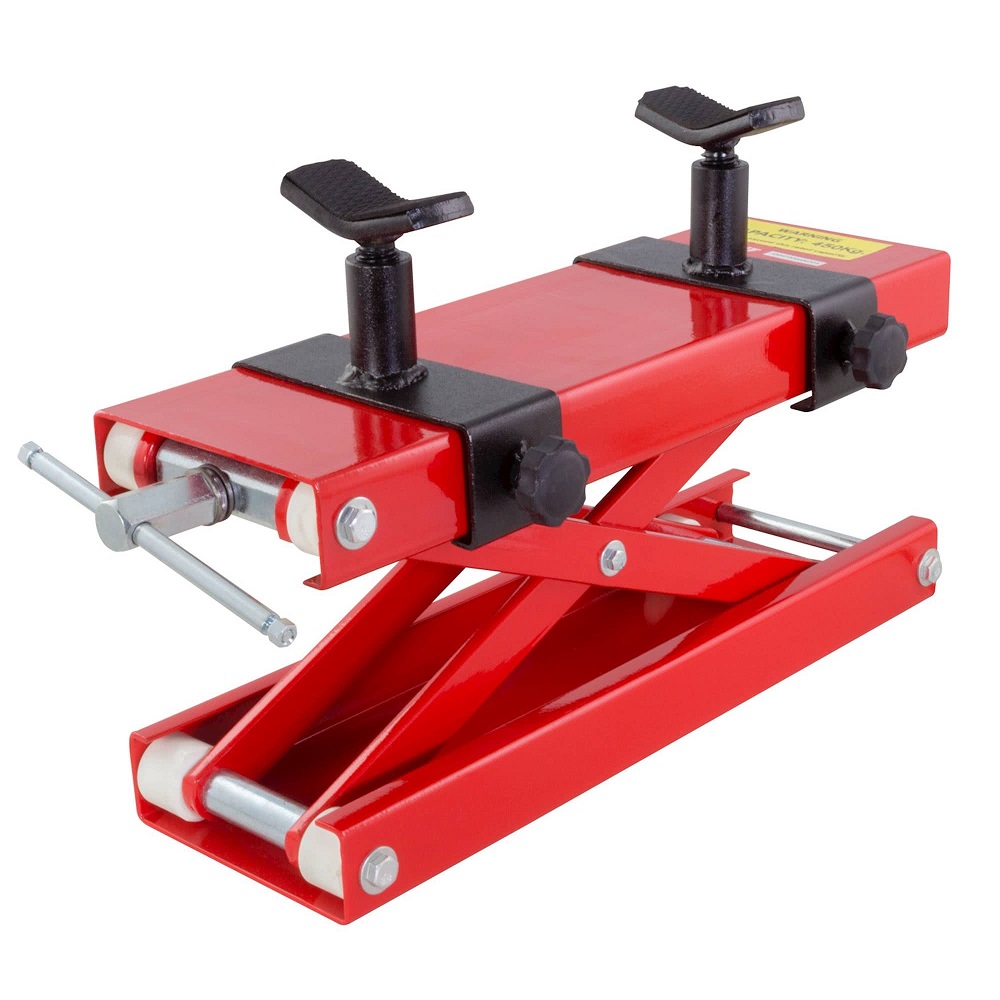
Knowing When to Call for Help
Recognizing Limitations
While using a motorcycle jack can simplify maintenance tasks, it’s essential to recognize your limitations as a biker. If you encounter a repair or maintenance task that is beyond your skill level, do not hesitate to call for professional help. Attempting to perform complex repairs without the proper knowledge can lead to mistakes and potentially hazardous situations.
When in doubt, it’s better to seek assistance from a qualified mechanic. Professional mechanics can provide the experience needed to diagnose and repair issues effectively. This approach saves you time and ensures your motorcycle is in safe, reliable condition.
Joining a Community
Consider connecting with a local motorcycle community. Engaging with fellow riders can be invaluable for learning new skills and sharing maintenance tips. Many groups organize workshops and events where members can learn and practice skills together. Participating in these activities enhances your confidence in using tools like motorcycle jacks.
Networking with other motorcyclists can provide support and insights. Sharing experiences and resources helps create a more informed and safer riding community. By developing these connections, you can enhance your overall motorcycle ownership experience.
Prioritizing Safety with Motorcycle Jacks
Using a motorcycle jack is an essential skill for maintaining your bike safely and effectively. By understanding how to choose the right jack, setting up appropriately, and using it correctly, you enhance your safety while working on your motorcycle. Prioritizing safety not only protects you but also extends the life of your bike.
Developing a routine that includes regular maintenance checks for both your motorcycle and jack will contribute to safer riding experiences. Avoid common mistakes by being mindful of weight limits and preparing adequately for each maintenance session. Finally, don’t hesitate to seek assistance when needed, and consider engaging with a community of motorcyclists for support and knowledge.
With these essential safety tips in mind, you can confidently use a motorcycle jack to keep your bike in optimal condition, ensuring that you enjoy many safe rides in the future. Embrace the freedom of motorcycling while being responsible and informed about the equipment that enhances your journey.
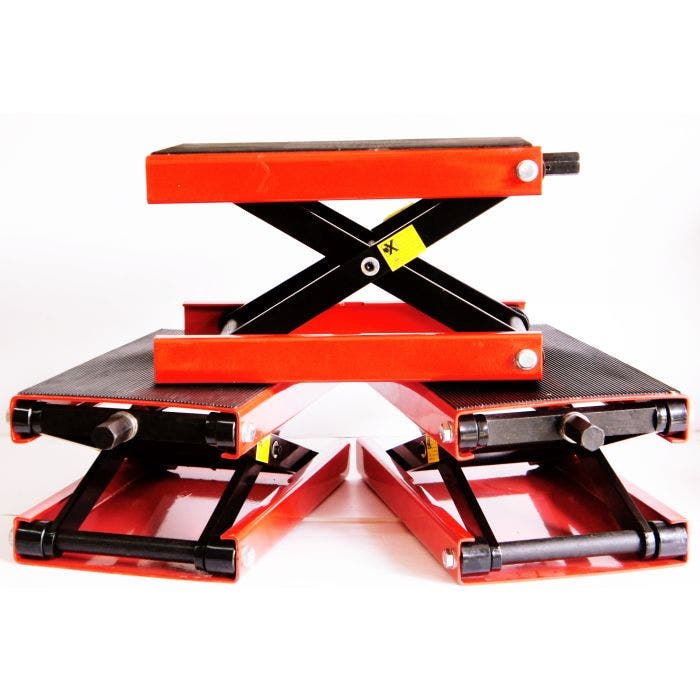
Leave a Reply